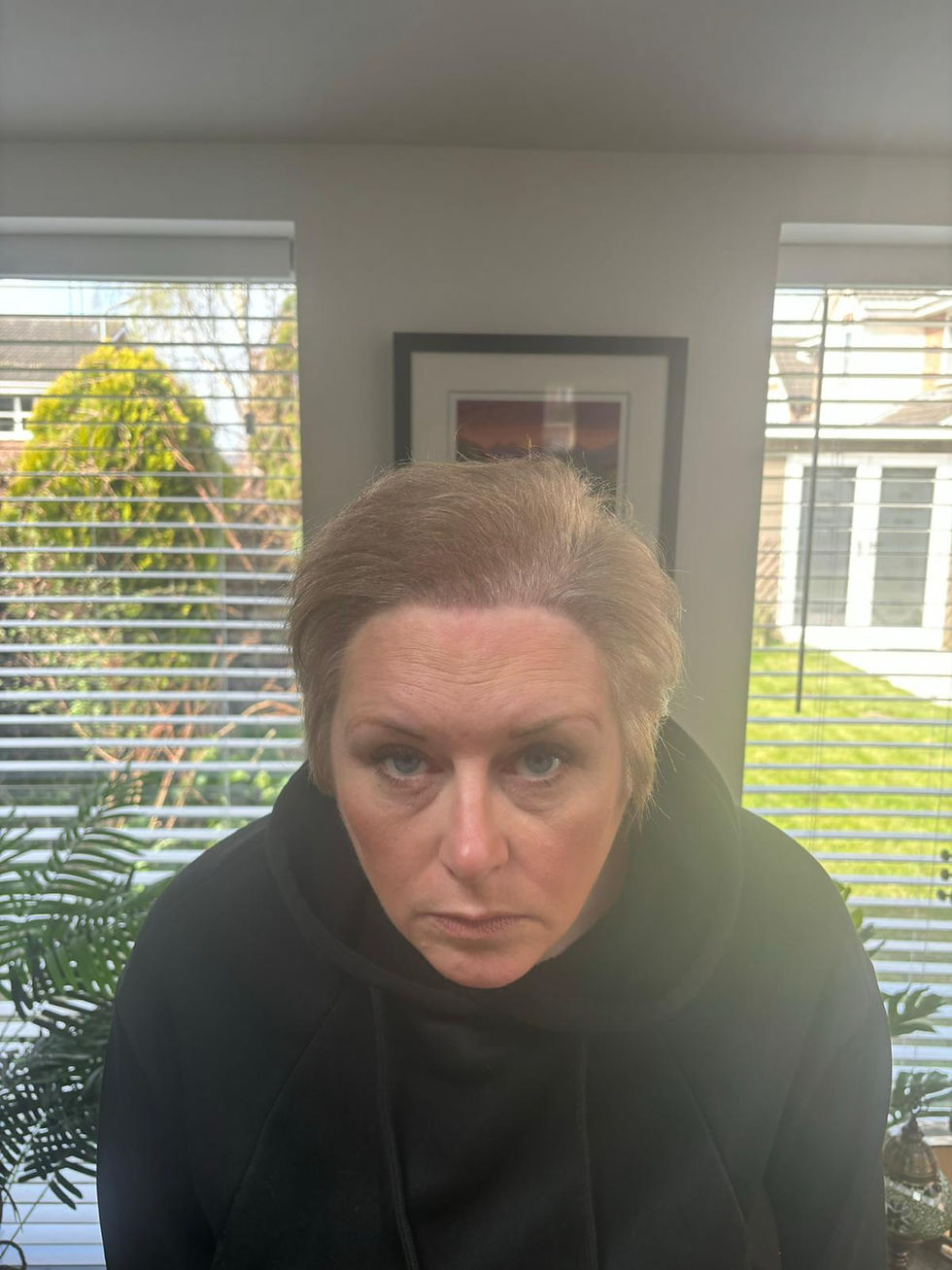Hair Transplant or Scalp Micropigmentation: A Comprehensive Comparison
- Vita Hair Clinic

- Oct 21
- 6 min read

Hair loss affects millions worldwide, impacting confidence and self-image. Navigating hair restoration options can feel overwhelming, especially when choosing between a hair transplant vs scalp micropigmentation.
This article provides a comprehensive comparison to help you understand how each option works, their benefits, limitations, and which might suit your unique needs best. Empower yourself with clear, trustworthy information before making this important decision on your hair restoration journey.
If you're considering these options and need professional guidance, feel free to reach out through our contact page.
At Vita Estetic, we are committed to providing you with the best possible support in your hair restoration journey.
Understanding Hair Transplant
A hair transplant is a surgical procedure that moves healthy hair follicles from a donor area—typically the back or sides of your scalp—to thinning or bald spots. This approach restores natural hair growth in affected areas, allowing you to style your hair freely.
Two main techniques make up modern hair transplantation methods:
Follicular Unit Transplantation (FUT): Removes a strip of scalp tissue to harvest follicular units.
Follicular Unit Extraction (FUE): Extracts individual follicles directly from the donor site.
Direct Hair Implantation (DHI): A variation of FUE where extracted follicles are implanted directly into the recipient area using a specialized tool, allowing for more precise placement and minimizing handling of grafts.
Your suitability for a hairline transplant depends on having enough healthy donor hair and good scalp condition. Recovery usually takes 1 to 2 weeks, with full results visible within 9 to 12 months. The transplanted hair grows naturally and offers long-term permanence when properly cared for.
Exploring Scalp Micropigmentation (SMP)
Scalp micropigmentation is a non-surgical hair restoration technique that uses tiny microneedles to deposit pigment into the scalp’s upper dermis layer. This creates the appearance of closely shaved hair follicles, delivering a natural-looking hairline or density illusion.
Benefits of SMP
Suitable for all stages of hair loss—from thinning to complete baldness
Does not require donor hair, making it accessible even if follicle health is poor
Provides immediate cosmetic results after just a few sessions
Minimal downtime and virtually pain-free compared to surgical options
The SMP benefits include quick transformation and low maintenance, appealing to those seeking a practical solution without surgery.
Comparing Hair Transplant and SMP: Key Differences
When considering the hair transplant vs scalp micropigmentation comparison, several key differences stand out:
Procedure Type
Hair transplants involve a surgical process relocating live hair follicles, whereas SMP is a non-surgical technique depositing pigment into the scalp.
Recovery Time & Pain
Transplants require a healing period of days to weeks with some discomfort; SMP offers minimal pain and almost no downtime.
Cost Factors
Hair transplants demand a higher upfront investment but usually no ongoing costs. SMP is more affordable initially but needs periodic touch-ups to maintain its appearance.
Appearance Impact
Transplants provide natural hair growth and styling flexibility. SMP creates an illusion of density, mimicking a closely shaved look without real hair.
Advantages and Limitations of Hair Transplant and Scalp Micropigmentation (SMP)
Hair Transplant Benefits
Offers permanent natural hair growth that you can style freely.
Transplanted follicles grow just like your original hair, allowing for versatile looks.
Unshaven hair transplant options are available, which can make the procedure less invasive and more convenient.
Hair Transplant Risks & Limitations
Involves surgery, which carries risks such as scarring, infection, and discomfort.
Recovery can take weeks, with some patients needing additional treatments to maintain or enhance results.
SMP Advantages
Non-invasive procedure with minimal pain and virtually no downtime.
Delivers quick, immediate cosmetic improvement, regardless of donor hair availability.
Typically more affordable, with a very high success rate in creating the illusion of density.
SMP Limitations
Does not stimulate actual hair growth—results are purely visual.
Requires periodic touch-ups to keep the pigment looking fresh over time.
Cost Considerations Including Hair Transplant Cost in Turkey
When deciding between a hair transplant and scalp micropigmentation, understanding the financial commitment is key.
Hair transplant cost varies widely depending on location, clinic reputation, technique, and graft numbers. In countries like the US or Western Europe, prices can range from $4,000 to $15,000 or more.
Scalp micropigmentation generally costs less, often between $1,000 and $4,000 globally, due to its non-surgical nature and fewer sessions.
The hair transplant cost in Turkey stands out for affordability without sacrificing quality. Clinics there offer competitive packages often between $1,500 and $5,500, attracting international patients seeking expert care at a fraction of Western prices. This price advantage is largely due to Turkey's leading position in hair transplant procedures as outlined here.
Choosing Turkey might reduce your overall expense significantly while accessing advanced techniques and experienced surgeons.
Budget considerations should include not only upfront costs but also potential follow-up treatments or touch-ups over time for both procedures.
Who Should Choose Hair Transplant or SMP? Post-Treatment Care and Maintenance Tips
Choosing Between Hair Transplant and SMP depends on several personal factors:
Extent of baldness: Hair transplants suit those with enough donor hair seeking natural regrowth; SMP fits well for extensive thinning or complete baldness.
Budget constraints: SMP is more affordable upfront, while transplants require a larger investment but may be more cost-effective long term.
Tolerance for surgery and recovery: If you prefer a non-surgical option with minimal downtime, SMP is ideal; transplants involve surgery and a healing period.
Combining treatments: Some find enhanced density and coverage by pairing both methods.
Post-treatment care essentials:
After a hair transplant, avoid strenuous activity, keep the scalp clean and moisturized, and protect it from sun exposure for several weeks.
With SMP, refrain from sweating excessively, swimming, or sunbathing for about a week; apply sunscreen regularly to preserve pigment longevity.
Caring attentively supports the best possible results from either procedure.
Conclusion
Deciding between a hair transplant vs scalp micropigmentation is a personal choice influenced by your specific hair restoration goals, lifestyle, and expectations.
Getting advice from experienced practitioners can help you understand better and give you personalized guidance.
They will take into account things like your hair loss pattern, budget, and comfort level with surgical procedures to suggest the best way forward. Remember:
No one solution works for everyone.
Your confidence and satisfaction are the most important.
Making informed decisions leads to long-term happiness with your results.
Be patient and open-minded in the hair restoration decision-making process to discover what truly suits you.
FAQs (Frequently Asked Questions)
What are the main differences between hair transplant and scalp micropigmentation (SMP)?
Hair transplant is a surgical procedure that relocates healthy hair follicles to balding areas, resulting in natural hair growth and styling versatility. SMP is a non-surgical technique that deposits pigment on the scalp to create the illusion of density without actual hair growth. The key differences include procedure type (surgical vs non-surgical), recovery time, pain levels, cost, and impact on appearance.
Who is an ideal candidate for scalp micropigmentation (SMP)?
SMP suits individuals with various degrees of baldness who may not have sufficient donor hair for transplantation or prefer a non-invasive option. It offers immediate cosmetic improvement with minimal downtime, making it suitable for those seeking quick results without surgery.
What are the advantages and limitations of hair transplant and SMP?
Hair transplant offers permanent natural hair growth and styling freedom but involves surgical risks like scarring, infection, and longer recovery. Additional treatments may be necessary over time. SMP is affordable, provides quick results with minimal pain, has a high success rate regardless of donor hair health, but does not produce new hair growth—only the appearance of density.
How do costs compare between hair transplant and scalp micropigmentation, especially in Turkey?
Globally, hair transplants tend to have higher upfront costs due to their surgical nature. Turkey is renowned as a popular destination offering quality hair transplants at competitive prices, making it financially attractive for patients. SMP generally costs less than transplants but may require periodic touch-ups.
What post-treatment care is recommended for both hair transplant and SMP to ensure optimal results?
After a hair transplant, patients should follow specific care instructions including gentle washing, avoiding strenuous activities, and protecting the scalp from sun exposure during recovery. SMP requires minimal aftercare but patients should avoid excessive sweating and direct sunlight initially. Consulting experienced practitioners for personalized guidance enhances treatment outcomes.













.png)
Comments